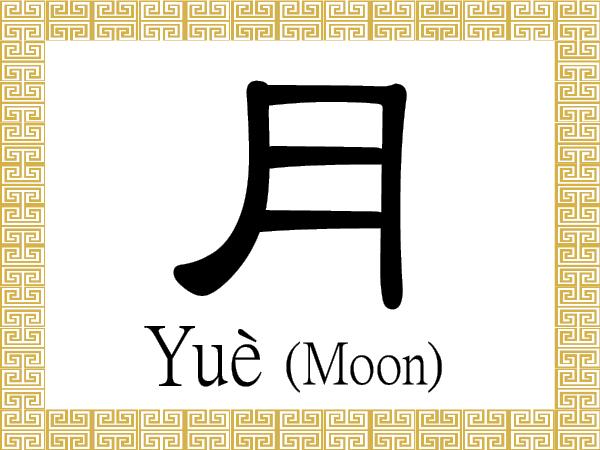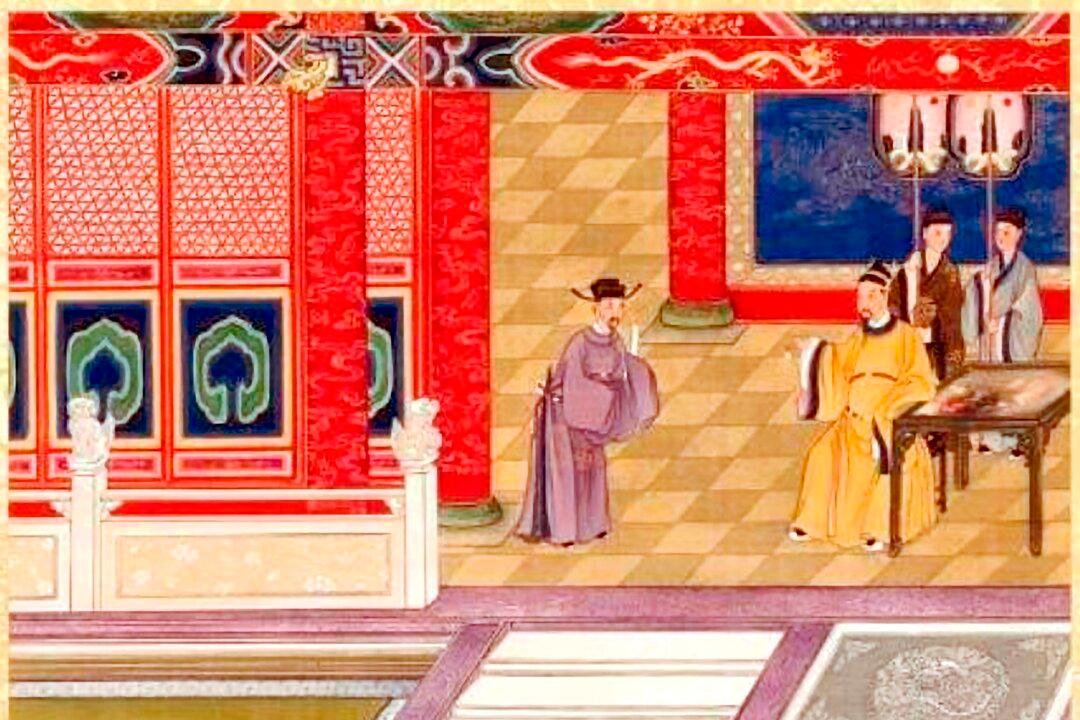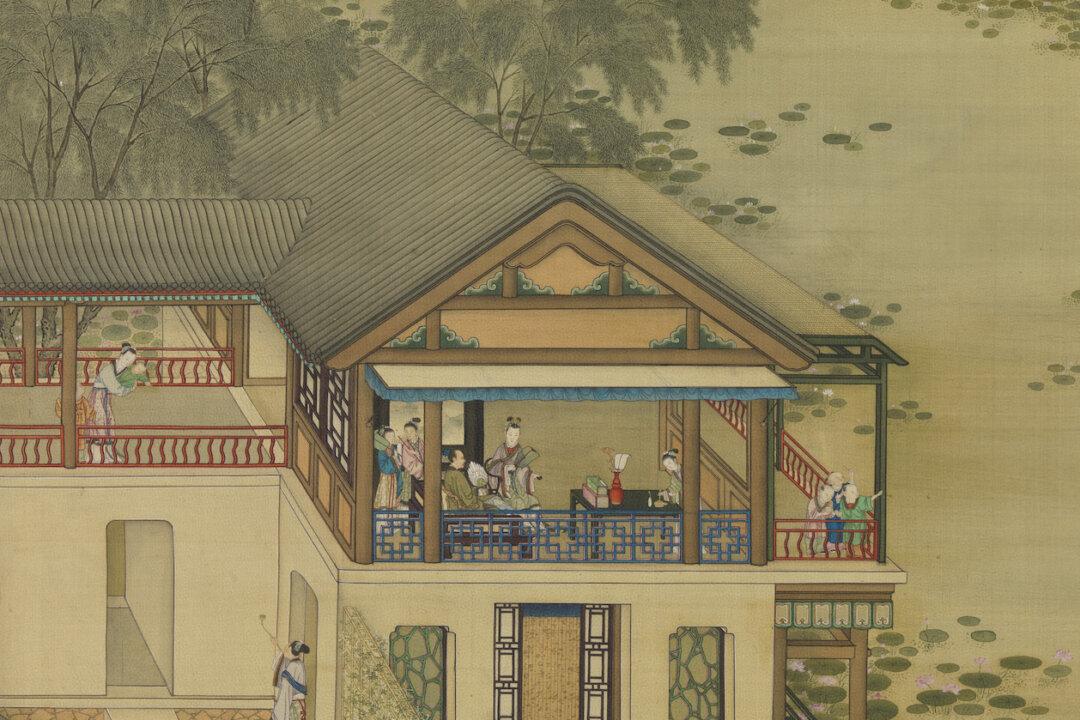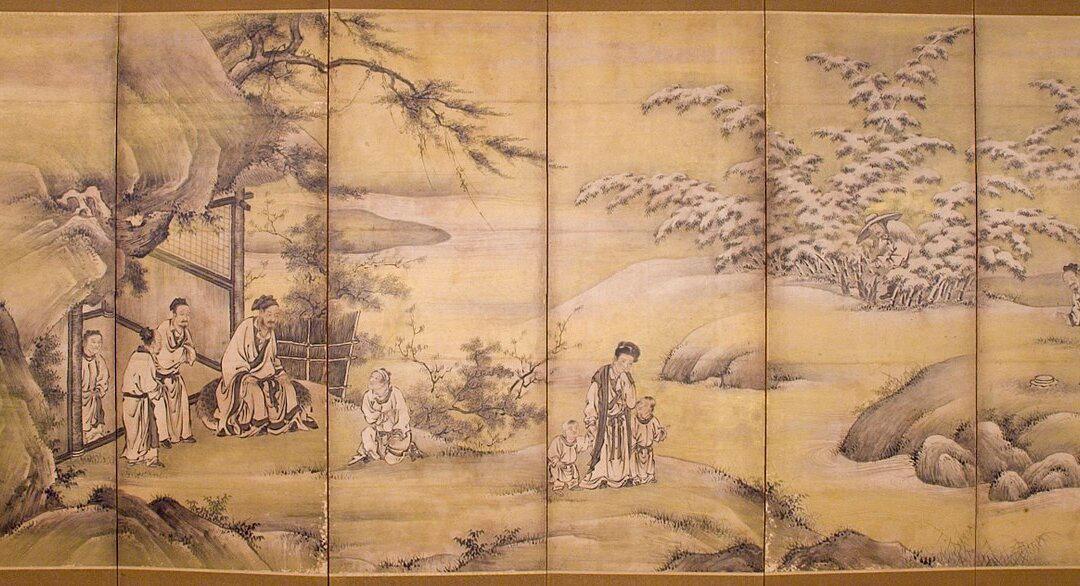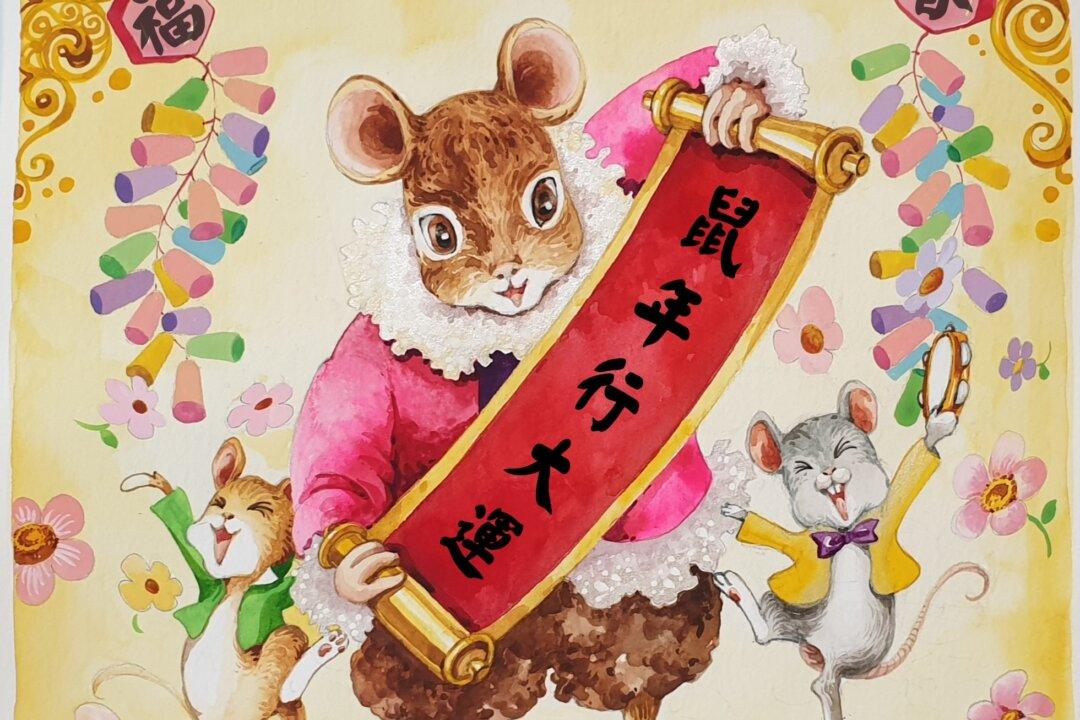The Chinese character for moon, 月 (yuè), is a pictogram that depicts a crescent moon.
The moon is also often referred to by the descriptive term 月亮 (yuè liàng), with the character 亮 (liàng), which means bright or light, emphasizing the brightness of the heavenly body.
The term 月球 (yuè qiú) is used to refer to the moon as a celestial body, as in “the astronauts visited the moon.”
Other terms combining 月 with another character include 月餅 (yuè bǐng), moon cake; 月食 (yuè shí), lunar eclipse; 月下(yuè xià), under the moon; 月光 (yuè guāng), moonlight; and 满月 (mǎn yuè), a full moon.
The phrase 花好月圓 (huā hǎo yuè yuán), literally “flowers are good [in bloom] and the moon is round [full],” is a metaphor that describes a wonderful and fulfilling life of bliss and is commonly used to convey congratulations on the occasion of a wedding.
月明星稀 (yuè míng xīng xī) suggests that when the moon is bright, the stars are few.
The character 月 can also refer to month, as in 一月 (yī yuè), the first month, or January, and 九月 (jiǔ yuè), the ninth month, or September.
